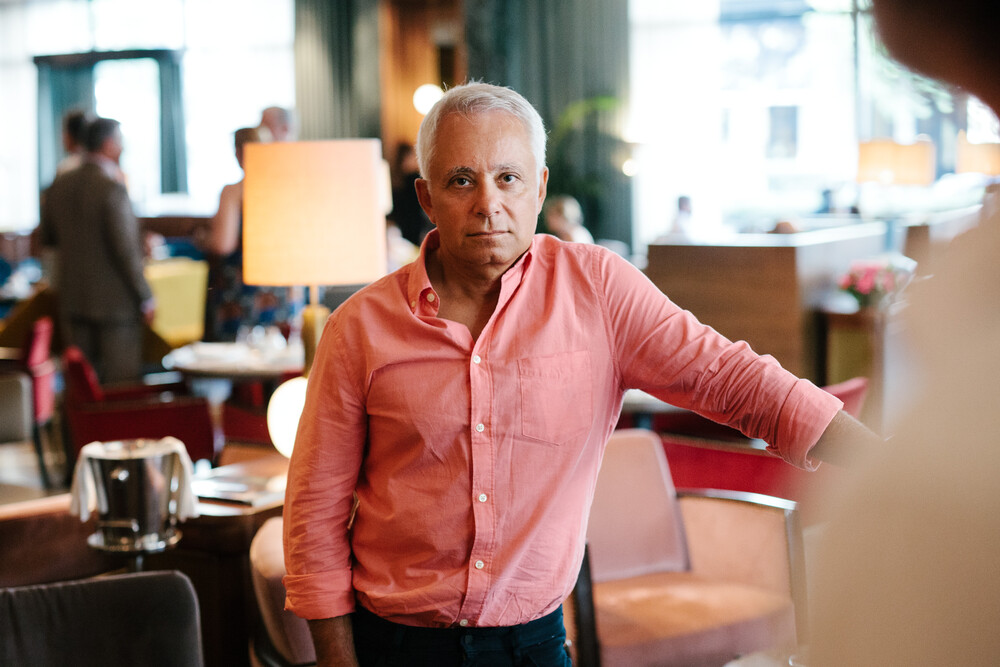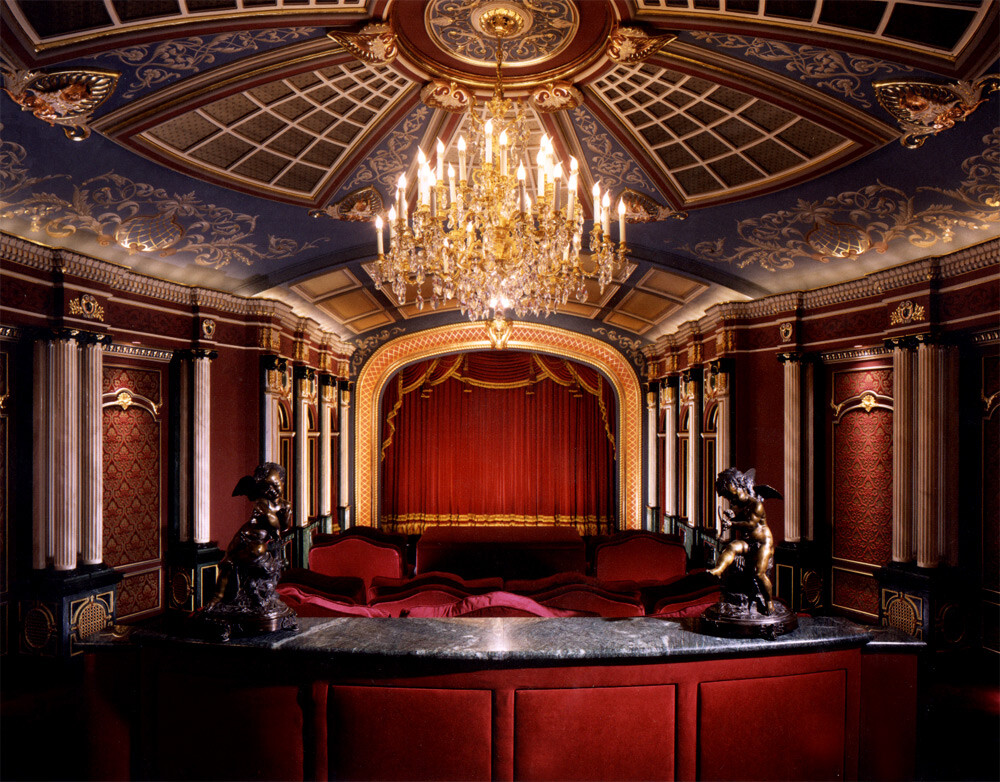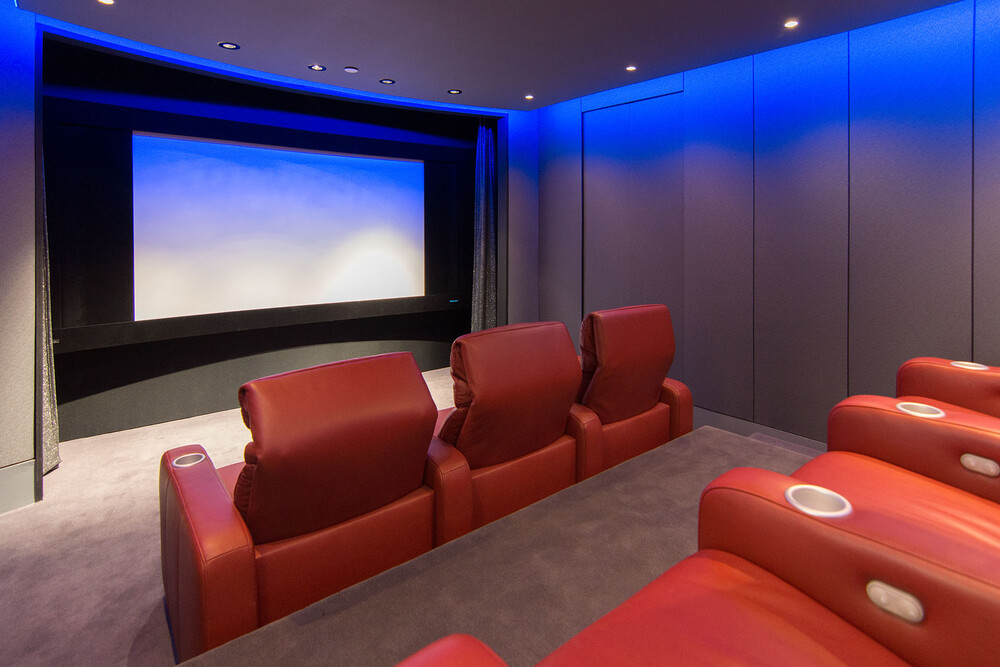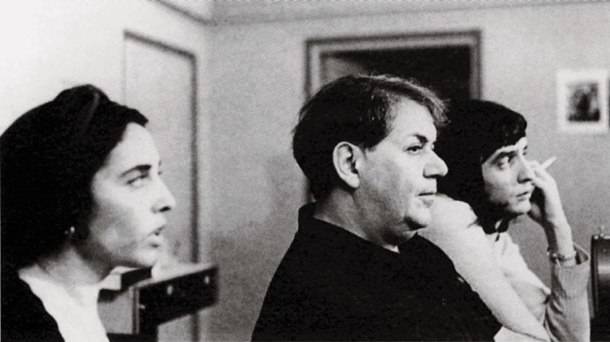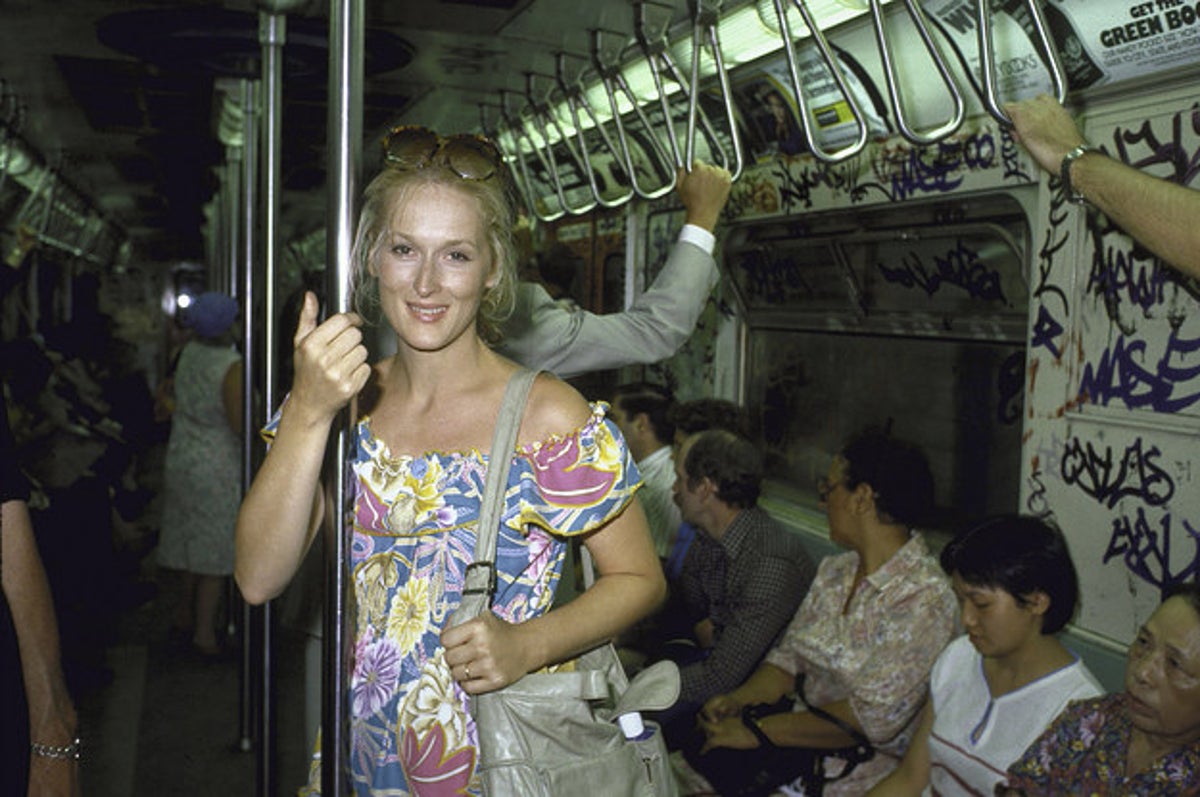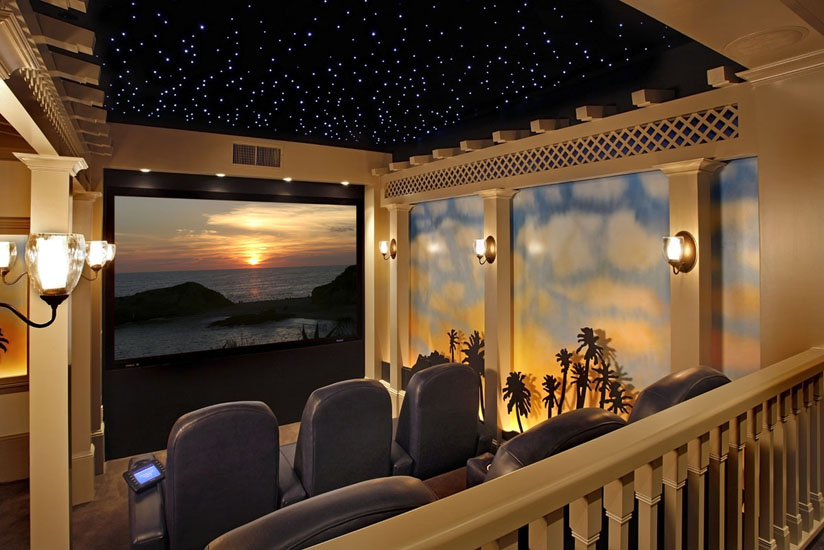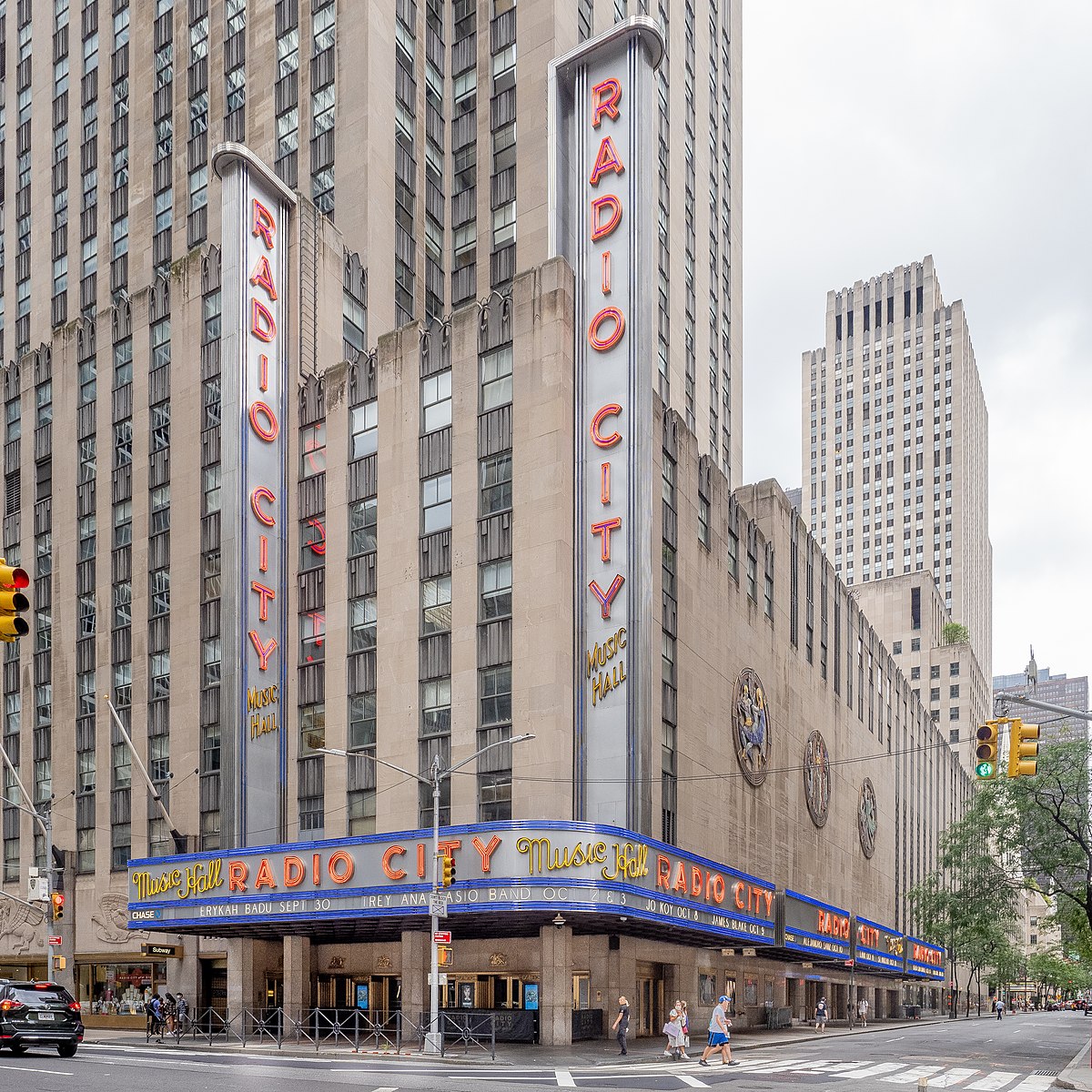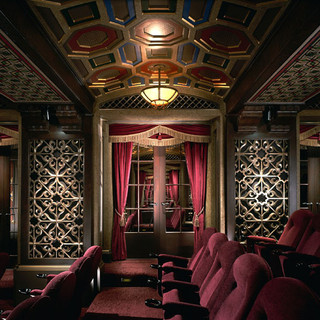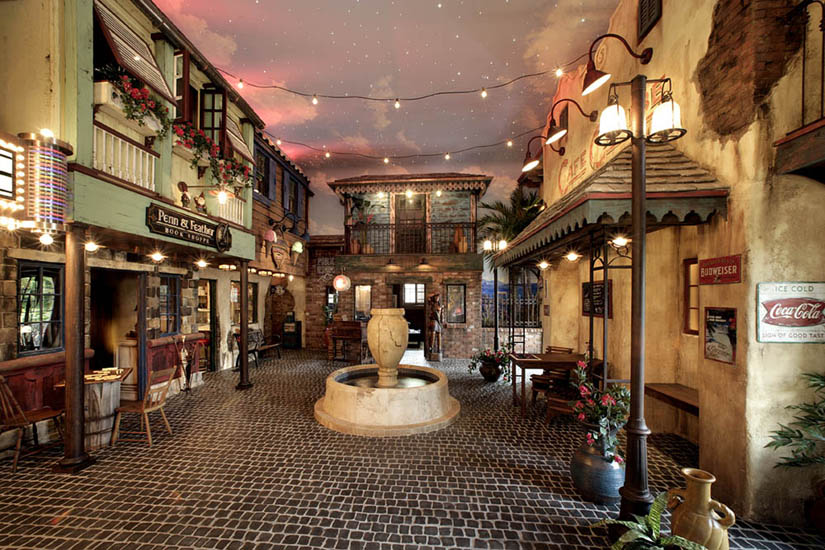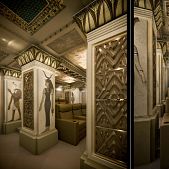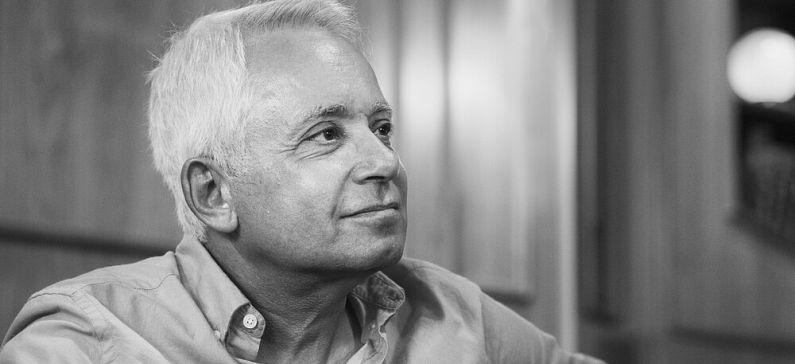
The man behind Home Cinema
Theo or Theodoros, no matter how someone addresses him, the cinephile nostalgic Kalomirakis will respond. He grew up in Greece, in the neighborhoods of Athens, between the real world and the imagination that the 7th art gave him.
With a solid education in design and cinema, he left for the United States on a scholarship and tried his hand at, among other things, criticism and directing, but changed course as soon as he was dazzled by the remnants of a dilapidated, iconic movie theater of the glorious period. movie palaces of America. The historic, vast Roxy was to be the reference point of a great career in the construction of “home theaters”, a condition that if he had managed to secure, he might not have needed to work again in his life. Starting from the basement of his house, he started improvised audiovisual systems long before they became fashionable, without necessarily having special technical knowledge. His love for cinema brought orders from all over the world and he responded, putting his imagination to adapt even to outrageous demands. The self-taught cinephile built bridges between nostalgia for good cinema and private movie watching.
His collaborations occupy a large space in his biography, among them the collaboration with Theodoros Angelopoulos in the magazine “Modern Cinema” (of which he was a co-founder), a missed opportunity with Meryl Streep, the reasons for the cancellation of his collaboration with Barbara Streisand, the spirit and method of his work, his cheerful and interesting experiences with clients, his ruthless view of the films he had managed to direct, with an emphasis on an ambitious plan that permanently and irrevocably prevented him from chimera of the auteur. In line with the vision for an ideal cinema, he saved many theatrical projects, reproducing them with impressive fidelity.
“I think it was in ’81 that I left Brooklyn. I was engaged, I got divorced, I grabbed an apartment in Manhattan, I was not involved in video. I had graduated from New York University and was writing film reviews in Greek newspapers. Then I left because the Greek community was so far removed from New York culture that it was like living in Greece. “There was no contact between Manhattan and Astoria,” he said in a recent interview.
Some years before he left for America he had set up a film company with Theodoros Angelopoulos, Pantelis Voulgaris, Vassilis Rafailidis and Giannis Bakogiannopoulos later received a scholarship from Fulbright to publish the magazine “Modern Cinema. In the first year he worked as a critic. “We all had a column and we wrote reviews, putting asterisks. I put 3 stars in “Psycho”, Vassilis 4, Angelopoulos 1! We wrote articles for American cinema. Then, while I was at the Stavrakos School, I decided to set up a cinema in the penthouse where we lived on Kolokotroni Street, in the Kourtaki Gallery. I called it Cine Katinaki and I had put basil on the outside, to give a popular feel. There I went shopping to shout at people to watch movies. Of course, we only had the school films, something experimental, some documentaries that we found from the American Film Library. We gathered the acquaintances of the acquaintances. I remember that Katranidis, Alekos Sakellarios was coming, I also remember Katerina Helmi once … That’s where the idea came to me: I wanted to see a movie at cinema nights with friends “he has stated.
A few years later the magazine had received a grant from Fulbright to make films and Angelopoulos had not used it. At that time he had finished “Representation” and was planning “Days of ’36”, in 1972. I remember it because then I made a film with Lakis Papastathis, for which we shared the award. It was a short film that was played at the Thessaloniki Festival together with “Days of ’36”. From there I was asked for it for the Karlovy Vary, Grenoble Festival and another in Czechoslovakia. Someone who saw it there asked me for it at the New York Film Festival, where a Greek film had never been played before. I sent it to her in 1973.
Angelopoulos became furious that they did not ask for his own – he kept this to me for many years. “But,” I would say to him, “what is my fault?” So what was played there, one of the two directors, Laszlo Benedek, who had done “The Wild One” with Marlon Brando, noticed me. “Eventually, they offered me a scholarship to New York University, in the Film & TV department, but for next year.”
He had little money to travel to America but also to study there. Maracaibo in the Persian. He worked there for a year, from ’73 to ’74, studied for a year at the school and after graduating, in 1974, he worked for a television company, Astir TV, as an assistant director in a series with Eleni Erimou, “Anxious Youth” “, Directed by Manolis Koutelidakis. Six months later he was found to be an assistant director in a film by Filippa Fylaktos, “Pavlos Melas”. But the film’s reputation was bad and it was described as junta because it was funded by the junta. There, however, he met Lakis Komninos who was the protagonist, they became friends and he suggested that he follow him on a tour in the Greek countryside as an assistant director. So he found himself in a troupe that was not a bunch but something better, that in fact played two plays.
All this lasted 4-5 months, then he returned to Athens and there he made his second film entitled: “Acropolis Express” with Papalios, “I tried to find it in the Greek Film Archive, they gave me the” Acropolis “by Pantelis Voulgaris . I was told that the film was played a week after the death of Fleury Dantonaki, who starred … Who knows where she is lost has said in an interview.
Theodoros Kalomirakis during his long career in cinema met with very important personalities of the time. Among them are Fleri Dantonaki and Manos Hadjidakis. “When we were shooting the movie Acropolis Express. We always lost Fleury – under the train tracks she ate poppy pies that she made herself … Fasoulis also played in the movie “I don’t think he has played in another”, Vogiatzis, Danis Katranidis, Evangelia Samiotaki, Manos Hadjidakis made the music. He had told me: “I will do music for you, if Fleury plays” he says in an interview.
He built the first home cinema in his apartment in 1982, with a large TV and two speakers. He was organizing a movie orgy weekend with a Mitsubishi TV, the one from which the projector came down. “I had placed the second cinema in the living room and I did not like it – the window on one side, the kitchen on the other, spoiled the concentration. We gathered friends from the magazines at the weekend. From 8 in the morning until 12 the next day we watched 30 movies! ” That was the moment when he decided that he should take the issue of Home Cinema more seriously since his friends always left excited. In this way he put down his plan based on two facts: the pre-recorded movies and the availability of a stereo and a large screen. If these two did not exist, in order to ensure the fidelity of the image, the materials with which the home theater was built would be missing. Without them as he has said he would never have thought of making a projection room at home.
During his early years in America, he was forced to write film reviews in Greek newspapers in order to survive. But because Astoria society was a small Greece, it felt it could not evolve, so he decided to move to Manhattan and work as an art director for magazines. I was kicked out of the house because of rent control (I got it from another friend who rented it), I searched with two of my friends who worked at Time Warner for a house in Brooklyn and we found a townhouse. I took the basement, which I saw as an opportunity to make a movie. It had heating boilers inside that we cleaned, I painted the walls turquoise and I bought 8 chairs from an old cinema – until I scratched the gum that was stuck underneath, only that took me 6 months. I went and asked them to teach me the work of the upholsterer, because the chairs were damaged, with cigarette butts, nylon turquoise cover – they were made of porn … I dressed them in red velvet and got a Barco projector. I bought it, I remember, for $ 150 from a company called In-flight Entertainment. I put it in a box, got a screen from the ones you hang on the wall and set up two rows of three chairs each – that was the innovation, you didn’t have a chair here, a sofa there. The journalists came, saw him, “wow wow”, they said, “like a normal cinema”. “Even if it sucked, they did not care,” he said in an interview. This was his first big hit on the front page of USA Today: “A crazy kid in Brooklyn made a movie at home, do you think?”
From the moment he made the movie, he felt a lack of satisfaction. Kalomirakis’ spirit is restless as he always suggested to his associates to sell the house and buy a bigger one so that he has space to make an even more majestic Home Cinema. “I did Roxy because I wanted to show them that I was capable of something better. I always had that, I wanted to outdo myself. This is my driving force. Whatever I make, I consider it awful … My film “For only a few performances”, which won 4 awards, is not seen! The “Acropolis Express”, three-handed. For me, that is. I can not dwell on what I do …. Good, bad, curse! He has said characteristically in a recent interview.
Theodoros Kalomirakis’s efforts for development did not stop there but they were not accidentally successful as he said “What is good in America is considered bad in Greece” a phrase that he believes to this day since it was the country that gave him many opportunities .
“Losing” Meryl Streep
Among his favorite movies he has made is one that never ended, his name was Camelot and he included his memories from Greece. Shot in 16 mm in New York. “Technical film, but at least it was me. I did it the first year I was at university. And the second I did “Nail in the coffin”. I wrote a screenplay that won the first Student Screenplay Award in America and they gave me $ 5,000. But I had learned with the 35 mm, in color. I had Giannis Pavlopoulos the editor, Stamatis Trigos the cameraman, who was the assistant director in Cecil De Mill’s “Ten Commandments”. $ 5,000 was not enough for me. I raised 100,000 – at that time you were buying an apartment on Park Avenue with that money. I owed them in 6 years. To cover the expenses, I co-directed someone from my class, who changed my script, made it unrecognizable. It was my fault that I let him do it. It was called “Fascination”. I was asked to play at the Cannes Film Festival. Great production, with sets, choreography by the choreographer of “Hello Dolly”, with the 50 Rockettes, the dancers of Radio City Music Hall … It had a scene-flashback from a musical by Busby Berkeley. We auditioned for a month to find the right actors, 30-40 in total. When I saw the first copy of the editing from the projector, I was horrified. I told them that if I was capable of doing this monster, they would not let me go behind the lens again. After years I decided to see the photos from the auditions again. One of the girls who had come was Meryl Streep. How do I know I had a sacred monster in front of me! Was it me who rejected her or was it the director? The best American actress passed in front of me and I got an irrelevant chick of my director (Jonathan Kaplan), a little name on Broadway. ” has been narrated recently in an interview.
He went on to say: This copy exists in Greece, I stole it from the University of New York, which was its property. I was forced to make the first copy in America, but I did not have the money to do it. I made it later, in a Greek studio, I do not remember his name. I left her, I had no money to get her, I was so indebted. Not even to return to Greece. “For a year, to survive, I carried sandwiches to the Empire State Building and grocery stores, until I had a second career in magazines,” he said in an interview.
Kalomirakis’s journey, having its ups and downs, led him to a second cinema, since the monumental movie palaces had almost disappeared at that time, with Radio City being the only survivor. “My first home cinema was the whim of a small child. For the second, more was written in the press, as on the front page of the “New York Times” … Somehow it was learned in Japan, it came to the notice of companies such as Sony, Yamaha and became a place of pilgrimage for the Japanese, who arrived every week by bus they came down with presents and blocks to the basement, I showed them and then they wrote about their experience. The first article was written in “Audio Visual Interiors”, a magazine for technology and decoration. “Phones then started ringing,” Theodoros Kalomirakis has described.
Kalomirakis’s clients were of all nationalities, including Ukrainian President Kuchma, who had set up a projection room where Stalin and Lenin watched the news in a Kiev suburb. It was a concrete room, but he had done it like a dacha (Russian cottage). “I remember a lady in Florida whose husband was of Greek descent. I went to her house for an interview. “What do you want?”, I ask her, “what do you have in mind?”. “I know what I want,” he tells me, “the Acropolis. And since you are Greek … »I was scared! He meant Versailles. I did not know where to go. Leaving, I caught sight of some nice flowers in the kitchen. I caught them, “are they real?” I asked. “No good, fake” was the answer. It was misunderstood that I went through it for real he has stated.
The small diamonds, or the temples of the 7th art created by Kalomirakis, are some in well-to-do homes in America and others in Hollywood. The way they were created was formally limited only to the main projection room but also extended to the vestibule so as to always evoke emotions in the viewer. This is the look of the Greek cinephile who found a way to establish himself at the Home Cinema production site, even though he never registered this name, despite being its inspirer.
What is thematic architecture?
For many, the halls are usually places in museums but also in possible scenes for artistic performances, but for Kalomirakis it is the way that brings his clients closer to their dream and to what it is. In Corona del Mar, for example, he built a cinema, the Rich, with the famous lobby and at the same time took advantage of the open space, where he represented the main street of the city, Main Street, where his client was born, placing everything there. which were important in his life (a jewelry store with his wife’s jewelry, a gallery with his collection of 200 cars, a bar-restaurant). Something similar they did to the death of the Pharaohs etc by placing their favorite things inside the pyramids.
“Among the works I like, I classify a construction I made for a Russian tycoon of Greek origin. I had already made him an Egyptian-style cinema in Russia. He bought a large plot of land in the southern Peloponnese, in Koroni, and asked me to make him something there that reminded him of Hagia Sophia. “We went to Istanbul, copied the columns, which we ordered to be carved in Italy, and created a cinema with mosaics,” he said in an interview.
Eddie Murphy, Barbara Steisant and Dwayne Johnson
When asked if he has created cinemas in Hollywood, Theodoros Kalomirakis answered: “Few! In Hollywood, cinema is the life of its inhabitants. There is no such thing as fantasy for the rest of the world. I made two rooms for Eddie Murphy, at his home in New York and in Beverly Hills, a very nice movie about Dwayne Johnson, Rock, a very likeable man. When I went to meet him in the Hollywood Hills, he asked me for a big favor: he wanted to buy my book to give him an autograph. “You saw them upside down,” I told him. A beast hugged me, lifted me up! While you see something else, say Barbara Streisand, who said to me, “You will give me great joy if you make me a movie and use my name.” Όταν φτάσαμε στο συμβόλαιο, μου λέει: «Δεν θα μου πάρεις λεφτά, θα μου πάρεις τη φήμη». Ήθελε να τον κάνω τσάμπα. «Ξέχνα το», της λέω, «κράτα τη φήμη σου». Και η Μάρθα Στιούαρτ ήθελε να της τον κάνω τσάμπα. Σε αυτές τις περιπτώσεις, είτε θα σε εκμεταλλευτούν είτε θα σου δώσουν πολύ λίγα, δήλωσε.
Ο Θόδωρος Καλομοιράκης άρπαξε τις ευκαιρίες της ζωής και πορεύεται πάντα με γνώμονα του τον ρομαντισμό του σινεφίλ και την αγάπη προς την 7η τέχνη. Ξεπέρασε τον εαυτό του και έχει μάθει από τα λάθη του γιατι όπως έχει πει “Δεν υπάρχει σχολή για να πάς να μάθεις αυτό που κάνω. Έμαθα κάνοντας λάθη”. Αν είστε λίγο τυχεροι μπορεί να βρεθείτε σε κάποια αίθουσα που έχει δημιουργήσει ο ίδιος και να απολαύσετε το σινεμά με άλλα μάτια.

